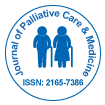Notre groupe organise plus de 3 000 séries de conférences Événements chaque année aux États-Unis, en Europe et en Europe. Asie avec le soutien de 1 000 autres Sociétés scientifiques et publie plus de 700 Open Access Revues qui contiennent plus de 50 000 personnalités éminentes, des scientifiques réputés en tant que membres du comité de rédaction.
Les revues en libre accès gagnent plus de lecteurs et de citations
700 revues et 15 000 000 de lecteurs Chaque revue attire plus de 25 000 lecteurs
Indexé dans
- Index Copernic
- Google Scholar
- Ouvrir la porte J
- JournalSeek de génamique
- Infrastructure nationale du savoir de Chine (CNKI)
- Bibliothèque de revues électroniques
- Recherche de référence
- Université Hamdard
- EBSCO AZ
- OCLC-WorldCat
- Bibliothèque virtuelle de biologie (vifabio)
- Publons
- Fondation genevoise pour l'enseignement et la recherche médicale
- Euro Pub
- ICMJE
Liens utiles
Revues en libre accès
Partager cette page
Abstrait
Religious Beliefs towards the End of Life among Elderly Patients with Chronic Heart Failure and the Relationship with End-Of-Life Preferences
Daisy J.A. Janssen, Josiane J. Boyne, Lucas Jörg, Matthias E. Pfisterer, Hans Rickli, Hans-Peter Brunner-La Rocca
Objective: Religious beliefs may influence end-of-life decision-making among patients with Chronic Heart Failure (CHF). Objectives of the current longitudinal observational study were: 1) to explore whether and to what extent preferences for life-sustaining treatments and willingness to trade survival time for excellent health are influenced by religious beliefs among elderly patients with CHF; and 2) to explore whether and to what extent religious beliefs change towards the end-of-life among elderly patients with CHF. Methods: This longitudinal observational study included 427 elderly patients with CHF of the TIME-CHF study (69% of the original sample). Patients were recruited in several hospitals in Switzerland and Germany. Faith, religious beliefs (Religion Questionnaire), preferences for Cardiopulmonary Resuscitation (CPR) and willingness to trade survival time for excellent health were assessed. The relationship between religious beliefs and preferences for CPR and willingness to trade survival time at baseline was explored. In addition, changes in religious beliefs between baseline and 12 months were explored among patients who died between 12 and 18 months. Results: Most patients were Catholic or Protestant. Atheist patients more often preferred ‘Do Not Resuscitate’ (DNR) than Catholic patients (p=0.03). Patients with full agreement with statements of the Religion Questionnaire were less likely to prefer DNR than patients with no agreement (p<0.05). There was no relationship between faith or religious beliefs and willingness to trade survival time for excellent health (p>0.05). The belief in afterlife increased among patients who died between 12 and 18 months (p=0.04). Conclusions: This study showed a limited relationship between religion and preferences regarding CPR in patients with CHF. Religious beliefs may change towards the end of life. Therefore, exploring religious beliefs and the influence on preferences for life-sustaining treatments as part of advance care planning is needed.
Revues par sujet
- Agriculture et Aquaculture
- Biochimie
- Chimie
- Food & Nutrition
- Génétique et biologie moléculaire
- Géologie et sciences de la Terre
- Immunologie et microbiologie
- Ingénierie
- La science des matériaux
- Le physique
- Science générale
- Sciences cliniques
- Sciences environnementales
- Sciences médicales
- Sciences pharmaceutiques
- Sciences sociales et politiques
- Sciences vétérinaires
- Soins infirmiers et soins de santé
Revues cliniques et médicales
- Allaitement
- Anesthésiologie
- Biologie moléculaire
- Cardiologie
- Chirurgie
- Dentisterie
- Dermatologie
- Diabète et endocrinologie
- Gastro-entérologie
- Immunologie
- La génétique
- Maladies infectieuses
- Médecine
- Microbiologie
- Neurologie
- Oncologie
- Ophtalmologie
- Pédiatrie
- Recherche clinique
- Soins de santé
- Toxicologie

 English
English  Spanish
Spanish  Chinese
Chinese  Russian
Russian  German
German  Japanese
Japanese  Portuguese
Portuguese  Hindi
Hindi